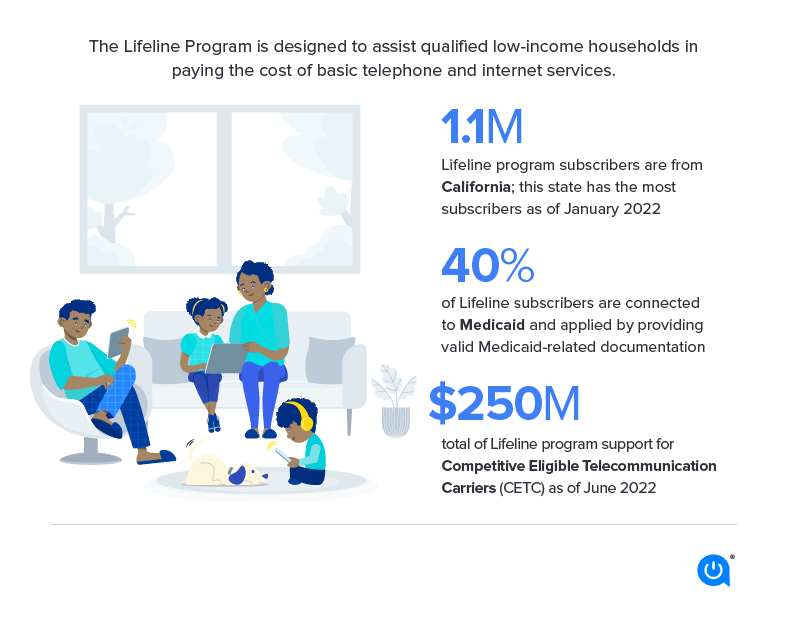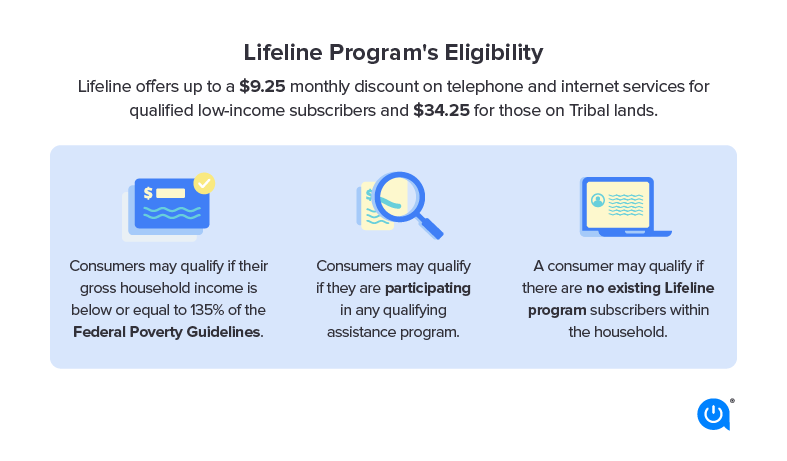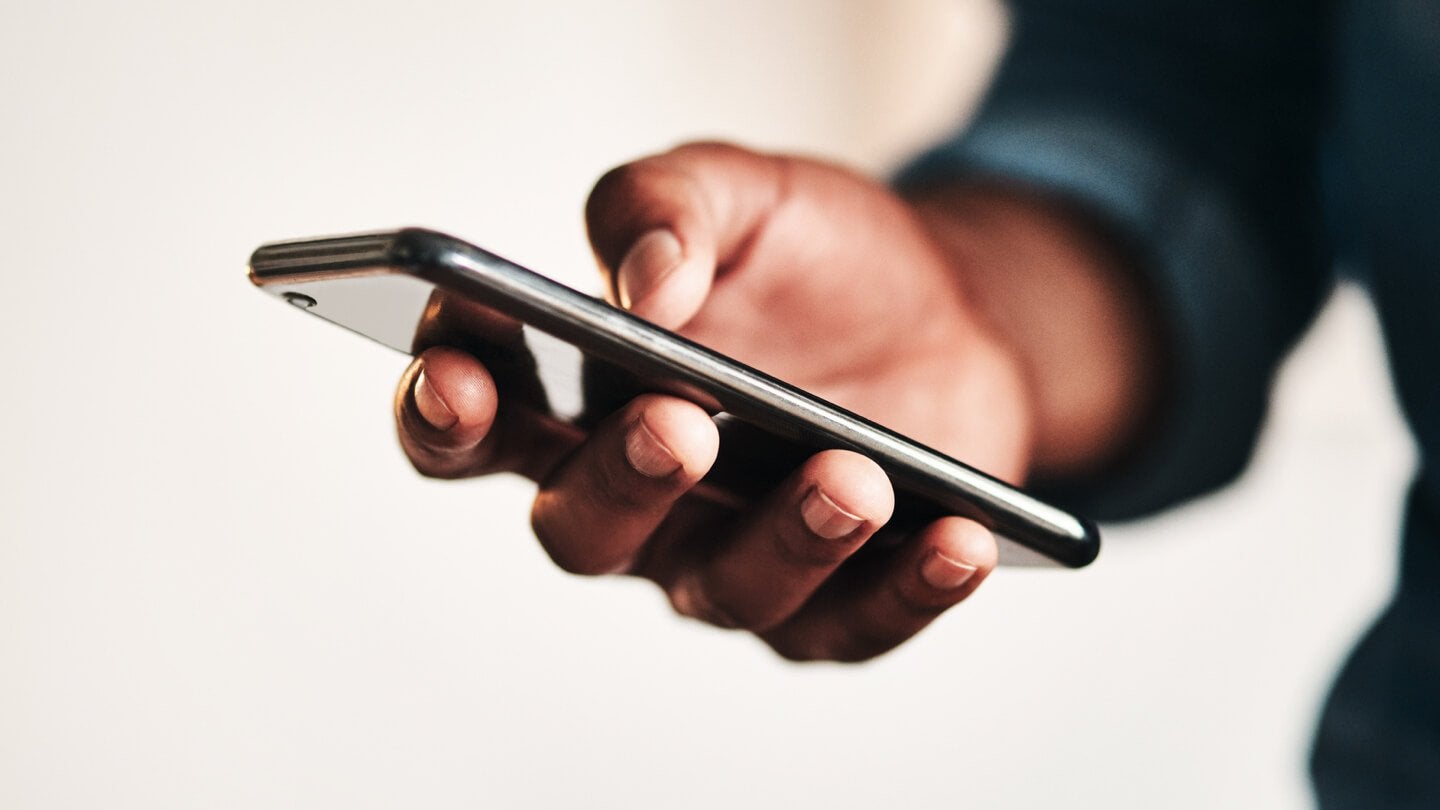Created in 1985 to help make telephone service more affordable for low-income Americans, Lifeline is one of the government’s oldest subsidies for cellphone and internet service. We’ll walk you through everything you need to know about applying for it and where to find providers that participate in Lifeline.

What is Lifeline?
The Lifeline program provides a discount of $9.25/mo. for low-income households, or $34.25/mo. for people on Tribal lands. You can use the subsidy on a landline, a cellphone plan, home internet service or even an internet and phone bundle. Only one discount can be applied to each household.

Who qualifies for Lifeline?
To participate in Lifeline, your income must be at or below 135% of federal poverty guidelines. You’re also eligible if you participate in other federal assistance programs like Medicaid, SNAP (Supplemental Nutrition Assistance Program) or Supplemental Security Income (SSI).
Learn more about how to qualify for Lifeline
How to apply for Lifeline
Enrollment in Lifeline is available to any individual who meets the eligibility requirements as set out by federal and state guidelines. Household income is one criterion used. Eligibility can also be gained if the individual or anyone in the household is already a participant in several public assistance programs such as:
- SNAP, formerly known as food stamps
- Medicaid
- Supplemental Security Income (SSI)
- Federal Public Housing Assistance (FPHA)
- Veterans Pension and Survivors Benefit
- Tribal programs (and residence on federally-recognized Tribal lands)
Proof of income or proof of participation in other public assistance programs may be required. Where separate households are sharing the same address, each household is eligible. This includes the residents of nursing homes or homeless shelters. Consumers can also have eligibility with a temporary address.
You can apply for Lifeline in one of three ways:
- Apply online at the Lifeline National Verifier website. Note: California (except broadband-only consumers), Oregon and Texas don’t participate in the National Verifier database. Consumers in those states will have to apply through their state’s existing application process.
- Mail-in applications: Print an application (English or Spanish), complete it and mail to the following address with your proof of eligibility:
Lifeline Support Center
P.O. Box 7081
London, KY 40742 - Contact the phone or internet provider you’d like to use and ask them if they participate in the Lifeline program. If your provider doesn’t offer Lifeline you can use this USAC tool to find providers near you who participate. Participating providers can help you apply for the Lifeline program.
After you apply, you’ll usually receive approval right away from Lifeline. But in some cases, the program may ask for additional information before approving or denying your application.
Providers that participate in Lifeline
There are hundreds of nationwide wireless and broadband providers that participate in Lifeline. That includes major national carriers such as Verizon and Xfinity and many smaller regional or discount carriers. You can search for providers near you on the USAC website that operates the National Verifier database created by the FCC.
Be aware: the USAC search results may not be comprehensive. A company may offer the Lifeline program even if it doesn’t appear on this search list. If you are interested in a specific provider, contact them directly and ask if they offer Lifeline assistance.
Other low-income internet resources
Lifeline is just one of many resources out there that can help you with your internet bill. Here are some other government programs and nonprofits to check out:
- Affordable Connectivity Program: This program was created to ensure that low-income households have affordable access to broadband services. This benefit provides a discount on internet service of up to $30/mo. for eligible households and a discount of up to $75/mo. for those on qualifying Tribal lands. Many internet service providers participate, and it has the same eligibility requirements as Lifeline, so you’ll automatically qualify if you’re enrolled in the program.
- Low-income internet plans: Several internet providers participate in programs for low-income households, too. You can get discounted plans from AT&T, Cox, Mediacom, Optimum, Spectrum and Xfinity if you meet income requirements or participate in another government assistance program.
- Internet nonprofit organizations: There are many nonprofits working to address the digital divide that can supply equipment or help with your internet bill. A good place to start your search is the National Digital Inclusion Alliance, which acts as a sort of hub for organizations working on the issue. We recommend checking out their Free & Low-Cost Internet page for the most up-to-date information on discounted plans available in your area.
Allconnect: Let us compare providers for you
Why should you choose Allconnect? We’re the #1 broadband marketplace in the U.S, meaning you can trust us to search, compare and order internet and TV service for your home.
Get started

Written by:
Joe SupanPrincipal Writer, Broadband Content
Joe is a senior writer for CNET covering home technology and broadband. Prior to joining CNET, Joe led MYMOVE’s moving coverage and reported on broadband policy, the digital divide, and privacy issues for the br…
Read more
Edited by:
Robin LaytonEditor, Broadband Content
-
Featured
![ACP program allows eligible households to get high-speed internet for free]() ACP program allows eligible households to get high-speed internet for free Robin Layton — 2 min read
ACP program allows eligible households to get high-speed internet for free Robin Layton — 2 min read -
Featured
![Guide to low-income internet options and affordable internet plans]() Guide to low-income internet options and affordable internet plans Robin Layton — 4 min read
Guide to low-income internet options and affordable internet plans Robin Layton — 4 min read -
Featured
![A community guide to advocating for better broadband services]() A community guide to advocating for better broadband services Ari Howard — 7 min read
A community guide to advocating for better broadband services Ari Howard — 7 min read
Latest
-
Friday, April 19, 2024
Can other Wi-Fi networks interfere with mine?Robin Layton — 4 min read
-
Thursday, April 18, 2024
Comcast introduces new pre-paid internet, mobile and streaming plansRobin Layton — 2 min read
-
Thursday, April 18, 2024
T-Mobile imposes data cap of 1.2TB/mo.Robin Layton — 2 min read






